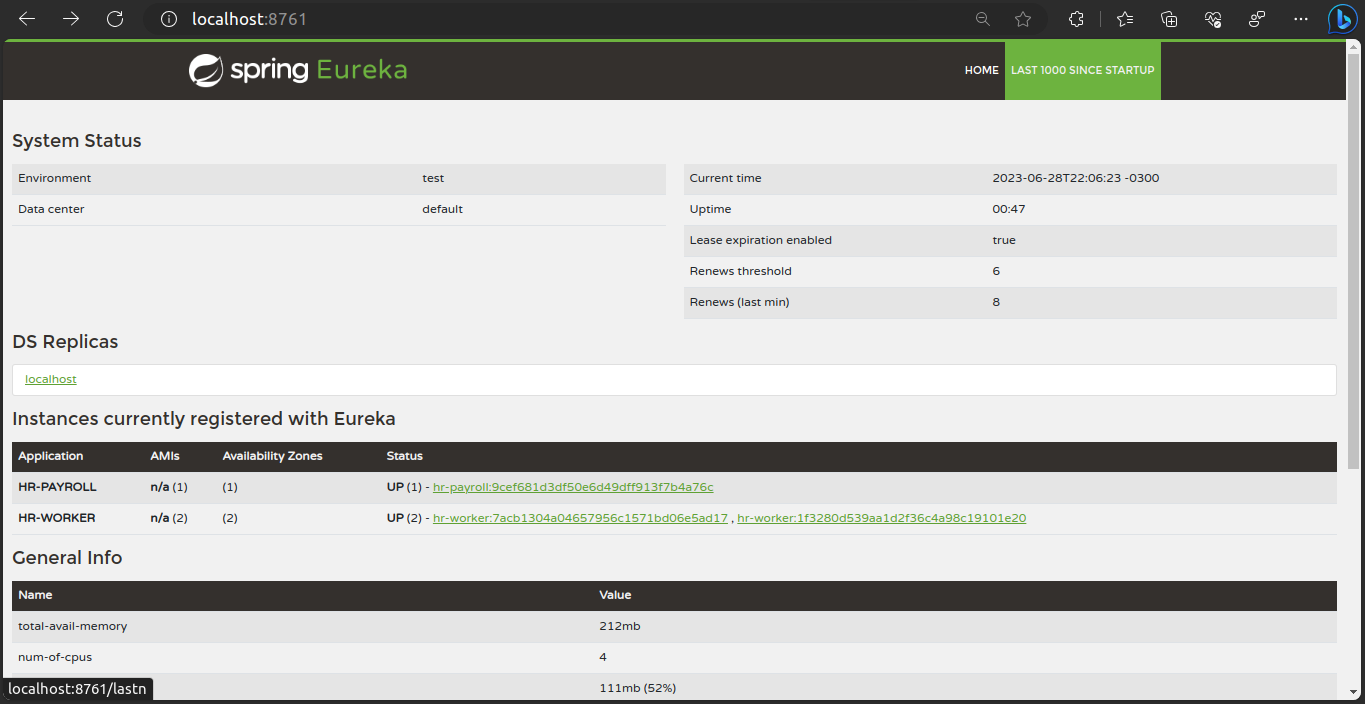How to configure Eureka Client
Configuration
Step 1: Add the following dependency in the application’s pom.xml.
...
<dependencies>
...
<dependency>
<groupId>org.springframework.cloud</groupId>
<artifactId>spring-cloud-starter-netflix-eureka-client</artifactId>
</dependency>
...
</dependencies>
<dependencyManagement>
<dependencies>
<dependency>
<groupId>org.springframework.cloud</groupId>
<artifactId>spring-cloud-dependencies</artifactId>
<version>${spring-cloud.version}</version>
<type>pom</type>
<scope>import</scope>
</dependency>
</dependencies>
</dependencyManagement>
...
Step 2: Update the main application class, adding the annotation @EnableEurekaClient.
@EnableEurekaClient
@SpringBootApplication
public class HrWorkerApplication {
public static void main(String[] args) {
SpringApplication.run(HrWorkerApplication.class, args);
}
}
Step 3: Add the following properties to the application.properties.
spring.application.name=hr-worker # here put the application name
server.port=${PORT:0} # associate an available port to the instance of the application
eureka.instance.instance-id=${spring.application.name}:${spring.application.instance_id:${random.value}} # name the eureka client instance at eureka server during registration
eureka.client.service-url.defaultZone=http://localhost:8761/eureka # URL of eureka server for client registration
Step 4: Run the project, access the URL http://localhost:8761/, and you should see an page like that. In this example, there are three clients registered. One of pay-roll service and two for hr-worker service.
